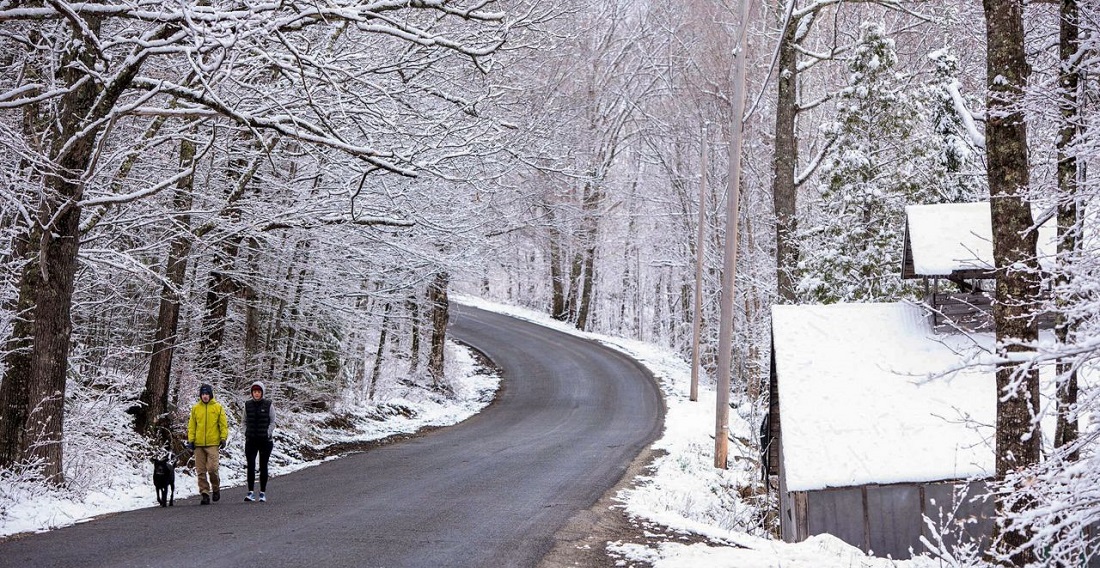In preparation for an imminent winter weather event, the National Weather Service (NWS) has issued a Winter Storm Warning for West Virginia’s southern coalfields and the Kanawha Valley. Effective from Monday through Tuesday morning, the warning signals the likelihood of substantial snowfall, with anticipated accumulations ranging between 3-6 inches from Welch to Charleston.
Weather Patterns and Forecast: According to the NWS, snowfall is projected to commence early on Monday, briefly easing late in the morning. However, the afternoon is expected to bring an intensification of snowfall, with the warning set to conclude at 7 a.m. on Tuesday.
Statewide Impact: While the southern coalfields and Kanawha Valley are under a Winter Storm Warning, a Winter Weather Advisory covers the majority of West Virginia, predicting potential snow accumulations of 3-5 inches over the two-day period. Northern and far eastern areas of the state are expected to experience comparatively lighter snowfall.
Precautionary Measures: Residents are strongly urged to take necessary precautions due to the potential hazards associated with slippery road conditions. Recommendations include wearing suitable clothing, reducing driving speed, and ensuring vehicles are equipped with additional essentials such as flashlights, food, and water in case of emergencies.
Harsh Winter Conditions: As temperatures plummet into the single digits, coupled with wind chill advisories predicting temperatures feeling as low as -10 degrees, West Virginia is bracing for a challenging start to the week. The winter storm’s impacts are expected to resonate across the state, necessitating a heightened state of awareness and preparedness among the residents.
As the region gears up for this winter storm, it is imperative for individuals to stay updated on official weather alerts, adhere to safety guidelines, and exercise caution during travel. The community is encouraged to prioritize safety as the storm unfolds, ensuring a resilient response to the challenging weather conditions ahead.
What is a winter storm warning
A Winter Storm Warning is an official alert issued by meteorological authorities, such as the National Weather Service (NWS) in the United States, to notify the public about an impending or ongoing winter storm that is expected to bring significant and potentially hazardous winter weather conditions. Winter Storm Warnings are typically issued when a combination of snow, ice, sleet, or freezing rain is expected to create conditions that could lead to substantial accumulations and impact travel, infrastructure, and public safety.
Key features of a Winter Storm Warning include:
- Snow Accumulation: A Winter Storm Warning is often issued when there is a high likelihood of substantial snowfall, typically exceeding a certain threshold within a specified period. The exact accumulation criteria may vary based on regional norms and expectations.
- Timing: The warning provides information about when the winter weather is expected to begin and end. This helps the public and authorities prepare for the onset of adverse conditions.
- Impacts: Winter Storm Warnings outline the potential impacts of the storm, such as hazardous road conditions, reduced visibility, and the possibility of power outages due to heavy snow or ice accumulation on power lines.
- Travel Disruptions: Given the potential for dangerous road conditions, Winter Storm Warnings advise against unnecessary travel and recommend taking precautions if travel is unavoidable.
- Precautionary Measures: The warnings often include recommendations for precautionary measures, such as staying indoors during the storm, keeping emergency supplies on hand, and preparing for possible power outages.
- Emergency Declarations: In some cases, especially when a winter storm is expected to be particularly severe, state or local authorities may declare a state of emergency, triggering additional measures to ensure public safety.
It’s important for individuals and communities to pay close attention to Winter Storm Warnings, follow any guidance provided by local authorities, and take appropriate actions to stay safe during adverse winter weather conditions.





